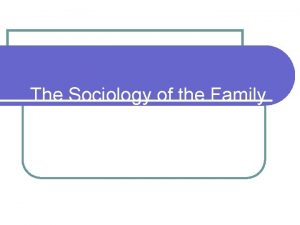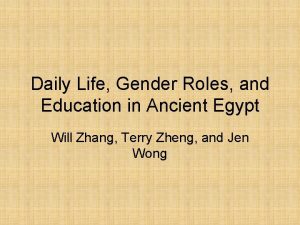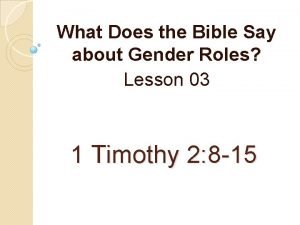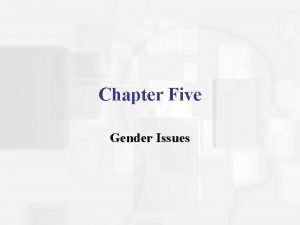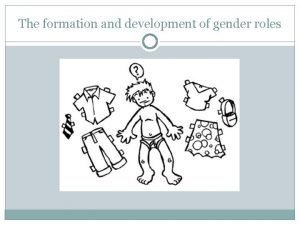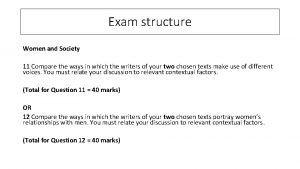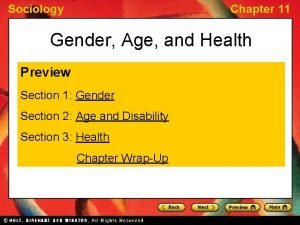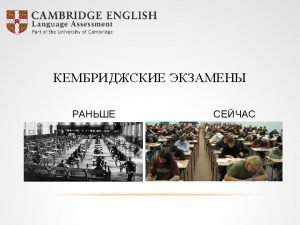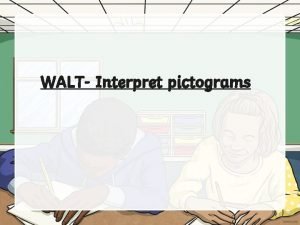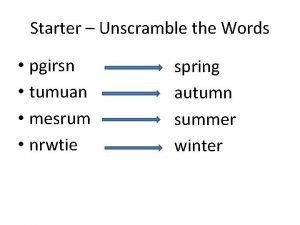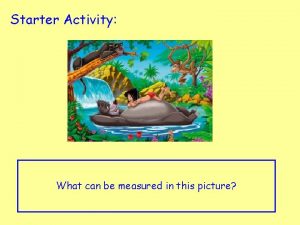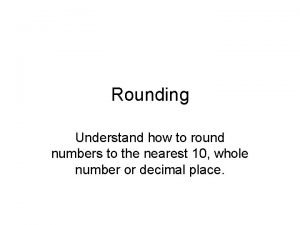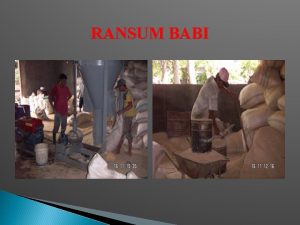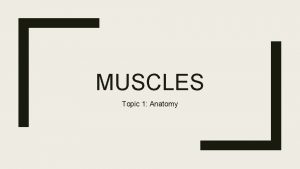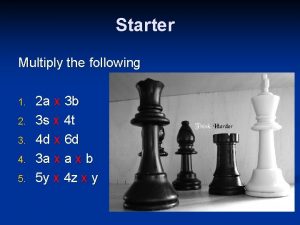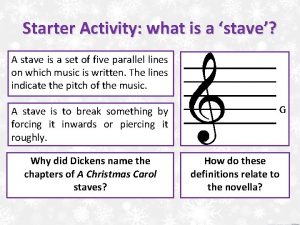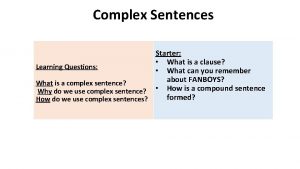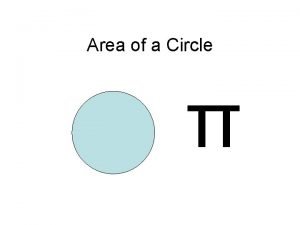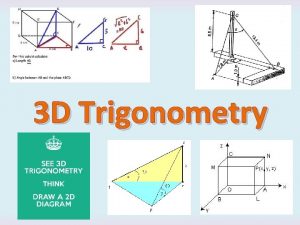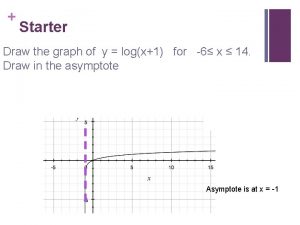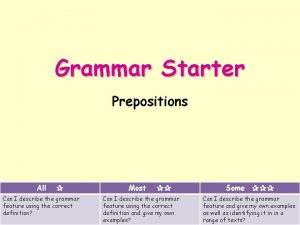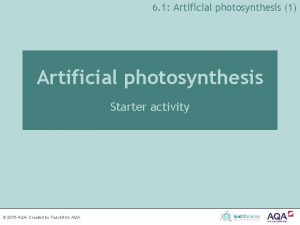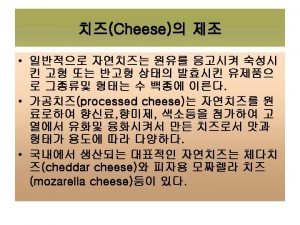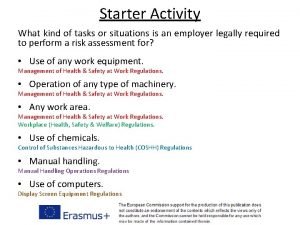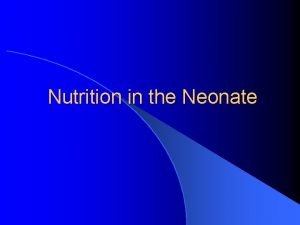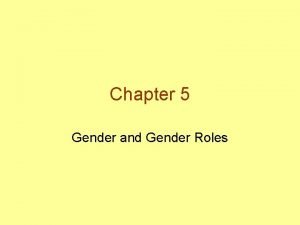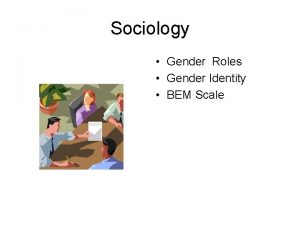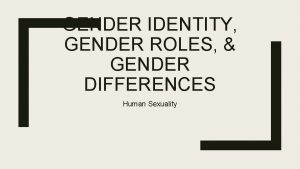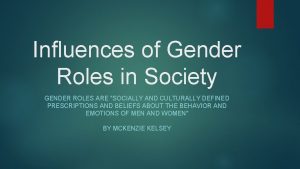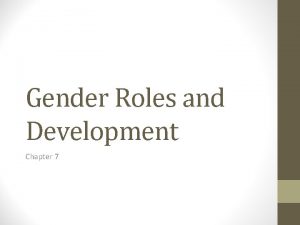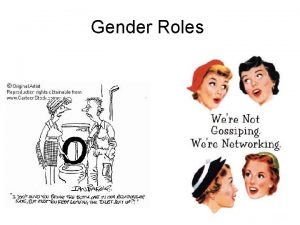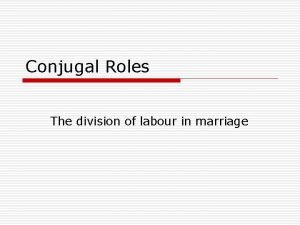Starter Review Gender Roles Joint Conjugal Roles Separate





























































































- Slides: 93

Starter: Review Gender Roles Joint Conjugal Roles Separate Conjugal Roles Symmetrical Family Egalitarianism Domestic Division of Labour Dual Burden Triple Shift New Man Decisionmaking Pooling Vs Allowance Gershuny Hardil Oakley Edgell

You Say We Pay Joint Conjugal Roles Separate Conjugal Roles Symmetrical Family Egalitarianism Domestic Division of Labour Dual Burden Triple Shift New Man Decisionmaking Pooling Vs Allowance Oakley Young and Wilmott

You Say We Pay Domestic Violence Dobash and Dobash Under-estimate Patriarchy Dark side of family life 1 in 4 women (1 in 8 repeatedly) 35 assaults before reporting Stanko Mirlees-Black Wilkinson Stress 1 in 7 men (1 in 20 repeatedly) New Right View 1991 Marital Rape Law New Right View All Men Are Rapists

Theoretical Perspectives on Division of Labour Functionalist Liberal Feminist Marxist. Feminist Radical Feminist

Theoretical Perspectives on Division of Labour Functionalist – sexual division of labour is natural and innevitable – women are naturally suited to the expressive role. Liberal Feminist – women have made real progress in terms of equality. If we address attitudes and behaviour future will bring more equality. Marxist-Feminist – housewife role serves the needs of capitalism (2 for 1) maintains the present workforce and reproduces future labour power. Radical Feminist – Women are the exploited group – the housewife role is created by patriarchy and serves the needs of men.

Power and Control in the Family (a) Explain what is meant by domestic division of labour (2 marks) (b) Identify two reasons for the trend towards egalitarian marriage. (4 marks) (c) Suggest three ways in which men’s role as parents may have changed in recent years. (6 marks) (d) Assess sociological explanations for inequalities between husbands and wives. (24 marks)

Domestic Violence: Exam Questions 1. Explain what is meant by ‘domestic marks) violence’ (2 1. Suggest 3 reasons why women might stay with violent partners or husbands (6 marks) 1. Examine the patterns of, and reasons for, domestic violence in society. (20 marks)

The nature of childhood, and changes in the status of children in the family and society • How childhood is socially constructed. Pilcher, Aries, Wagg • Different sociological views on the nature and experience of childhood. Postman, Palmer, Womack • How childhood is experienced differently across gender, ethnicity and social class. Mc. Robbie and Garber, Brannen, Howard • Cross cultural differences and how the experience of childhood has changed historically. Aries, Punch, Donzelot

Has the position of children improved? 1 got worse 10 significant improvements Name on a post it. Prepare to justify your answer.

Childhood Social Construction of Childhood Has the position of children improved? The future of childhood

Something to consider. . . http: //www. youtube. com/watch? v=01 x. Yd. Gsisf 8&feature=player_embedded&safe=active 6 questions – 6 minutes. . . GO! 1. What is childhood? 2. Write down 3 words you would associate with childhood 3. What is adolescence? 4. When does childhood end? 5. How are children different from adults? 6. Identify 2 ways in which children are legally controlled

What is childhood? • It is commonly thought (in the west) that childhood is a special and protected time of life, and that children are different from adults. Why do children need protecting?

Primary Socialisation • • Nurturing Learning about societal norms and values Behaviour Rules and sanctions Childhood is sometimes referred to as a golden age of ‘innocence’. In some ways, it could be described as a period of quarantine – children are sheltered from the ‘real’ world.

Pilcher (1995) • The most important feature of the modern idea of childhood is ‘seperateness’. Laws (what children can and cannot do) Dress (though some argue less so nowadays) Entertainment

Wagg (1992) • Childhood is socially constructed. • This golden age of protection and restriction is not found throughout the world. • There is no single, universal experience of childhood. • Experiences are also vastly different in different eras (time periods). • Wagg argues childhood is not ‘natural’. ‘Biological immaturity’ is the natural state (nature), childhood is social constructed (nurture)

Laws in the UK At what age can one. . . 1. Legally drink alcohol 2. Purchase cigarettes 3. Have sexual intercourse 4. Have a part-time job 5. Have a full-time job 6. Be convicted of a crime

1. Legally drink alcohol 2. Purchase cigarettes 3. Have sexual intercourse 4. Have a part-time job 5. Have a full-time job 6. Be convicted of a crime 18 18 16 13 16 10

Criminal age of responsibility • In the UK this age is 10, what about other countries? US India China Sweden Belgium Iran 6 -12 7 14 (for serious crimes) 15 18 9 for girls, 15 for boys

What can you conclude about the experiences of childhood from these pictures?

• Childhood is a SOCIAL CONSTRUCTION- created and defined by society, rather than simply a biological state • Ideas about childhood vary between different cultures, societies and different historical periods

Cross-Cultural Differences in Childhood: A Comparative Approach • Bolivia – 5 years old expected to work. (Punch, 2001). • Samoa – never too young to take part in work. (Lowell-Homes 1974). • Tikopia – children do not automatically do what adults ask (Frith 1970). • Triobriand Islands – adults tolerate children’s sexual explorations. • Black foot Indians – beat boys to make them strong.

Globalisation of Western Childhood. • Some sociologists argue that childhood is a Western construct (socially constructed) that has been forcibly imposed on some cultures. • Some child liberationists think that cases of Western charities campaigning against child labour or street children imposes views about how childhood ought to be. • Some believe the Western view of childhood is spreading through the world. Not disappearing.

Historical differences in childhood Sociologist Phillippe Aries (1960) argued that childhood is a relatively ‘recent’ invention. . .

PRE INDUSTRIAL SOCIETY

Pre- industrial society • Childhood as we know it did not exist • Children were ‘little adults’ who took part in the same work and play activities as adults. • Toys and games specifically for children did not exist. • Children seen as an economic asset, rather than something to be cared for • Children were punished for crimes in the same way that adults were (In Tudor times a 7 year old could be hung for stealing) • High death rates encouraged indifference and neglect towards infants. Aries used paintings and diaries to develop his theory.

• Why might there be problems in using evidence such as paintings and diaries to understand life? s i a t a d f o e p y ? t c t t a e s e Wh i r a i d , s g n i t n pai

Childhood in Medieval Times


Industrial family

Industrialisation • Children from W/C families still worked in mines, factories etc BUT!!! • M/C attitudes started to change- parents investing emotionally in children as the death rate of children was starting to fall

Mid 19 th Century: • Adults became concerned with children who were begging on the streets and child prostitution. • Children were banned from working in the factories and mines where many had been killed. • BUT some W/C parents resisted changes as they depended on children wages and many children continued to be badly treated

Aries (1960) Critique: Cult of Childhood. 20 th Century – century of the child. Child-centred society. • Was there no concept of childhood in the past? Or merely a different notion of childhood.

20 th Century: A Child-Centred Society • Emergence of child- centred society- ‘children are valued, loved and protected!’ • As a result of improved standards of living= major decline in infant mortality rates • Increased availability of contraception meant couples could choose to have fewer children= invest more time in them in terms of love, socialisation and protection

Child centred society Have their own toys, TV programmes, play areas made especially for them!! Have their own doctors, Children are provided teachers etc, to care for them with an education Special food/drink for kids

Task Read the following statements and decide which period of time it fits into. . PI= pre industrial IS= industrial society TS- today’s society

What period of time am I? • • Children and adults both work Children’s toys and games do not exist Lots of laws to protect children Childhood seen as separate from adulthood Many middle class children stop working increased contraception Aries argued that children were regarded as an economic asset

What period am I? • High infant mortality rate • Child centred society • No laws to stop children being overworked • Adults start to become concerned about child prostitution • children work in mines, factories etc • Infant mortality rate starting to fall • Children are like small adults, taking part in the same work and play activities

Perspectives on Childhood

What is meant by the idea that childhood is socially constructed?

How has childhood changed over time?

Activity: Suggest reasons why childhood has changed during industrialisation? Laws restricting child labour Compulsory education 1880 Child Protection Laws Growth of Children’s Rights Declining Family Size Lower infant mortality Theories of child development Modern industry needs an educated workforce who need a compulsory education

Modern Childhood • Children now had a separate legal status • Accompanied by development of adults specialising in children Aries – Our world is obsessed with the physical, moral and sexual problems of childhood • Children have different needs • http: //www. youtube. com/watch? v=dz. CHjfa. Egn 8&feature=related&safe=active

Assessment Questions: a) Explain what is meant by the term child centred society (2 marks) b) Suggest 2 reasons why childhood can be argued to be a social construction (4 marks) c) Identify three changes linked to industrialisation that have led to changes in the position of children (6 marks)

Has the position of children improved? Activity – Yes – No Continuum. Name on a post it. Prepare to justify your answer.

De Mause (1974) “The history of childhood is a nightmare from which we have only recently begun to awaken. The further back in history one goes, the lower the level of childcare, and the more likely children are to be killed, abandoned, beaten, terrorised or sexually abused” Q) What is De. Mause trying to say?

THINK OF KEY WORDS WE ASSOCIATE WITH CHILDHOOD……. .

innocence happines s Fun playing Love

The positive view of childhood March of progress • Over the past few centuries, the position of children has improved • Today children are more valued, better cared for, protected etc • The family and society have become more child centred!! Evidence: Laws against child labour. Child Protection Professionals. Lower infant mortality. Smaller family sizes – needs met.

Conflict View • ‘March of Progress’ view is false • Society is based on conflict – There are inequalities between children – risk and care, many remain unprotected – Inequalities between children and adults – experience greater control, oppression and dependency, not care and protection

But could childhood be disappearing?

Inequalities among children • Not all children will share the same status or experience of childhood Inequality Gender differences Ethnic differences Class differences Research evidence

Inequalities among children • Not all children will share the same status or experience of childhood Inequality Research evidence Gender differences Hillman (1993) boys more likely to be allowed to cross the road, use buses and go outside. Bonke (1999) Girls do more domestic labour (x 5 than boys) Ethnic differences Brannen (1994) study Asian families strict towards daughters. Bhatti (1999) ‘Izzat’ Class differences Poor mothers have babies with a lower birth weight. Woodroffe (1993) Children from unskilled manual workers more likely to suffer from hyperactivity disorders. Howard (2001) Children born into poorer families more likely to die in infancy or childhood and suffer from poorer health.

Inequalities between children and adults Firestone (1979) and Holt (1974) argue the child protection is a form of oppression. We forcibly segregate children and make them dependent and powerless. We need to free children from adult control – CHILD LIBERATIONISM

Neglect and abuse • Dark side of the family where parents control their children through physical and mental abuse • http: //www. youtube. com/watch? v=P 9 njhc. QU l. Xc

Inequalities between children and adults What other ways do adults have control over children?

Task - Inequalities between children and adults • • • Adults have control over children’s. . . Space Time Bodies Access to resources • Read pages 33 -34 and make notes

Child Liberationism Age Patriarchy – adult domination and child dependency (Gittens, 1998). Violence used against children to assert this dominance. Hockey & James (1993) – children tend to Act UP or Act Down. Modern childhood is a state most children want to escape. Critique – some adult control is necessary. Children are not completely powerless

Task: 1. Draw up a two-column table with a title ‘Has the position of children improved? ’ 2. Head one column up ‘YES’ and the other ‘NO’. In each column, list evidence and arguments in support of that view. 3. Then write a brief conclusion saying whether on balance you think the position of children has improved, giving your reasons.

Has the position of children improved? March of Progress The Conflict View

So has the position of children improved? Tennis One of you will have the view of march of progress, the other conflict You will rally with each other, arguing whether, according to your view, childhood has improved or not! The person who can rally the most points back, supporting their view, wins!!


Plenary –essay plan me Assess whether the position of children has improved in contemporary society. (20 marks)

You Say We Pay Childhood adolescence Social construction of childhood Phillip Aries Historical Differences Cultural Differences Child-centred Industrialisation March of progress Conflict Theory Inequalities between children Child Liberationism

Is this evidence for or against a child-centred society?

Task: • Summarise the article about the different generations of childhood in Sheffield. 1. What is the article suggesting? 2. What changes have occurred over time? 3. What are the specific reasons for these changes in attitudes?

The Future of Childhood: Is childhood disappearing?

POSTMAN (1984) childhood is disappearing 1) The growth of television means that there are no more secrets from children. Television gives them unlimited access to the adult world. They are exposed to the ‘real world’ of sex, disaster, death, suffering. 2) ‘Social blurring’- little distinction between adults and children. Children's games disappearing, they speak, dress and act more like adults.

Task Suggest 3 examples of ways in which children’s activities, leisure, dress or food and those of adults have become similar in recent years…

The Middle Ages/Medieval Period • Most people were illiterate. • Speech was the only skills needed. • Children could enter adult society because they could speak and converse. • There was no division, protection or mystery, childhood was not associated with mystery.

th The 19 Century • More and more people became literate • This was in part due to the rise of newspapers (print media) • The printed word created a knowledge hierarchy. Adults could read – children could not. • This gave adults the power to keep issues like sex, money, violence and death etc a secret from children. • As a result childhood became more innocent.

Today • Postman believes the decline of the printed word and the rise of the visual world (TV, internet) has destroyed this knowledge hierarchy. • Children can acquire all sorts of knowledge from TV, and they can access it (like the internet) • The boundaries between adults and children are broken down. • The results are that children want to engage in the adult world, as they experience it so young. • Children’s and adults tastes become indistinguishable.


Brooks (2001) has criticised Postman…… • But evidence suggests that adults are taking more and more control of children’s lives- cotton wool society!!! • parents are more obsessed with safety, and ever more concerned with defining boundaries for their kids • Perhaps it is children that are disappearing and not childhood- smaller % of our overall population today, and getting smaller. . .

Opie (1993) A separate childhood culture Analysis of research into children’s games, rhymes and songs. Strong evidence that there is a separate independent children’s culture.

• http: //www. youtube. com/watch? v=0 b 7 mw. TK 564 o • http: //www. youtube. com/watch? v=jpp. Uk. WG Kgls • http: //www. youtube. com/watch? v=1 Zxz. H 9 Gu f. P 4&feature=related

Toxic childhood- Sue Palmer (2007) • Rapid technological and cultural changes are harming children • Parents are spending less time with their children and are more than happy to allow technologies, such as video games, occupy their children’s home upbringing! • Children are deprived of traditional childhood and family life- not so child centred now!!!

Globalisation of Western Childhood. • Some sociologists argue that childhood is a Western construct (socially constructed) that has been forcibly imposed on some cultures. • Some child liberationists think that cases of Western charities campaigning against child labour or street children imposes views about how childhood ought to be. • Some believe the Western view of childhood is spreading through the world. Not disappearing.

Is childhood under threat? Margo and Dixon (2006) • UK youths are at, or near, the top of international figures on: – Obesity – Self-harm – Drug and alcohol abuse – Early sexual experiences – Teenage pregnancy

Childhood in postmodernity Jenks – relationships are unstable in postmodern society – increase in divorce – relationships with children important source of adult stability – adults become even more fearful about children’s safety. Childhood is not disappearing – increased surveillance and regulation.

Is childhood under threat? Contrasting debates • All in all. . . there is no clear evidence that childhood is disappearing, because childhood itself is a social construct with no fixed age boundaries or definitions.

Is childhood under threat? Contrasting debates • More rights, but not equal • Growing similarities between adults and children (dress, activities etc) • Compulsory education keeps being extended (dependency on parents) • Children's physical movement is more restricted • But their moral behaviour is less restricted (internet, TV etc)

Moral Panic • Some say the disappearance of childhood is a moral panic. • This is when the media and other agencies create widespread social panic about a particular issue. • It becomes a real concern for the general public.

Task • Each table has a children’s toy. • You are marketers trying to make update this toy. • Give it a twist, make is slightly inappropriate, perhaps something that supports the notion that childhood is disappearing, or that children are engaging in more adult interests.

Plenary Task – Is Childhood Disappearing? Arguments For: Arguments Against:

Assess sociological explanations of changes in the status of childhood. (20 marks)

Social Policies that affect children

Townsend et al Using data from 43 developing countries they found: • 1/3 of children in the world suffer from absolute poverty (i. e. below the minimum food, shelter and clothing level) • 134 million children have never been to school • Nearly 400 million children have a 15 minute walk to get water or are drinking unsafe water

Childhood & Industrialisation • WC attitudes stayed the same but MC attitudes started to change in the mid 19 th century. • Campaigners fought against children working in mines and factories • Schooling became important for the MC.

th Childhood In 20 Century The 20 th century became ‘child centred’ Health and diet improved and the infant mortality rate declined.

th The 20 century saw the increasing need to protect children via a number of pieces of legislation. 1945 Butler Education Act – schooling for all 5 -15 (Raised to 16 in 1972) The Children Act 1989 – giving more rights to children

State Policies that affect children: • The state supervises the socialisation of children through compulsory education (lasts 11 years) • Social Services/social workers police families that are deemed to be ‘at risk’.

2004 Children Act • Produced the policy ‘Every Child Matters’ • Focuses on the wellbeing of children aged 0 -19. Aiming to keep children healthy, safe and economically secure. 1991 Child Support Act (CSA) • Protects children’s welfare in the event of separation and divorce – the child's welfare is paramount (most important) • Some children have used the act to ‘divorce’ their parents!

 Joint conjugal roles
Joint conjugal roles Elizabeth bott conjugal roles
Elizabeth bott conjugal roles Difference between nuclear family and joint family
Difference between nuclear family and joint family Conjugal family
Conjugal family Harmonia conjugal
Harmonia conjugal Conjugal crossword
Conjugal crossword Equipista
Equipista What is a conjugal visit
What is a conjugal visit Strategic gender needs and practical gender needs
Strategic gender needs and practical gender needs Snow white male version
Snow white male version Is there any bias in gender roles based on the excerpt
Is there any bias in gender roles based on the excerpt Gender-role development
Gender-role development Ancient gender roles
Ancient gender roles Contemporary gender roles
Contemporary gender roles Are gender roles a social construct
Are gender roles a social construct Gender roles in casablanca
Gender roles in casablanca What does the bible say about gender roles
What does the bible say about gender roles Integration of gender roles in school and curriculum
Integration of gender roles in school and curriculum Gender roles theory
Gender roles theory Indus river valley gender roles
Indus river valley gender roles Qin dynasty gender roles
Qin dynasty gender roles John/joan case
John/joan case A thousand splendid suns motifs
A thousand splendid suns motifs Chapter 11 gender age and health review worksheet answers
Chapter 11 gender age and health review worksheet answers Spool joint lamb
Spool joint lamb Hyaline cartilage between vertebrae
Hyaline cartilage between vertebrae Joining methods wood
Joining methods wood Memorandum of joint venture
Memorandum of joint venture Break joint vs spool joint
Break joint vs spool joint Condyloid joint and ellipsoid joint
Condyloid joint and ellipsoid joint Weld faults
Weld faults Chapter review motion part a vocabulary review answer key
Chapter review motion part a vocabulary review answer key Uncontrollable spending ap gov
Uncontrollable spending ap gov Narrative review vs systematic review
Narrative review vs systematic review Systematic review definition
Systematic review definition Narrative review vs systematic review
Narrative review vs systematic review Starter mover flyer ket, pet
Starter mover flyer ket, pet Pictogram starter
Pictogram starter Reichstag fire who was the fire starter
Reichstag fire who was the fire starter Starter unscramble
Starter unscramble What is directional and non directional hypothesis
What is directional and non directional hypothesis Starter background
Starter background Starter activity clipart
Starter activity clipart Starter activity
Starter activity Solving equations starter
Solving equations starter Rounding starter
Rounding starter Romeo and juliet starter
Romeo and juliet starter L=8
L=8 Formulasi pakan babi
Formulasi pakan babi Form og innhold i novelle
Form og innhold i novelle Structure of skeletal muscle
Structure of skeletal muscle Midlife crisis starter pack
Midlife crisis starter pack Nata de coco starter culture
Nata de coco starter culture Location of fold mountains
Location of fold mountains Wordle starter words
Wordle starter words Nth term starter
Nth term starter Good morning period
Good morning period Good morning starter
Good morning starter Starter s11
Starter s11 Multiply starter
Multiply starter Whats a stave
Whats a stave Paired statement key
Paired statement key Holger christiansen as
Holger christiansen as Stator resistance starter
Stator resistance starter Alternative reference rates
Alternative reference rates The angry clouds marched across the sky figure of speech
The angry clouds marched across the sky figure of speech Maths bot starter generator
Maths bot starter generator Honor show chow poultry starter
Honor show chow poultry starter Complex sentence starters
Complex sentence starters Zero circle of planimeter
Zero circle of planimeter An inspector calls starter activities
An inspector calls starter activities Plenary pyramid
Plenary pyramid Match the following terms and definitions
Match the following terms and definitions Principal axis sine function
Principal axis sine function Starter draw test
Starter draw test Tipos de partida
Tipos de partida Analysis starter
Analysis starter S611 soft starter
S611 soft starter Rebel starter pack
Rebel starter pack Preposition starter
Preposition starter Grammar starter
Grammar starter Connectives starter
Connectives starter Soft starter funzionamento
Soft starter funzionamento Photosynthesis starter activity
Photosynthesis starter activity 5 minute starter activities
5 minute starter activities Starter formation
Starter formation 1262020 starter
1262020 starter The revolving component of the starter is the:
The revolving component of the starter is the: Shingle unscramble
Shingle unscramble Unscramble each of the clue words
Unscramble each of the clue words Starter tasks
Starter tasks Starter of the day activity soda morning soft start
Starter of the day activity soda morning soft start Starter of the day activity soda morning soft start
Starter of the day activity soda morning soft start Tpn osmolarity
Tpn osmolarity

